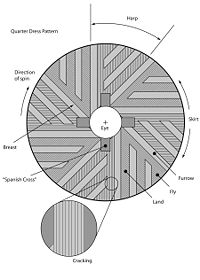
Hand morphometrics, electrodermal activity, and stone tools haptic perception
Sign Up to like & getrecommendations! Published in 2019 at "American Journal of Human Biology"
DOI: 10.1002/ajhb.23370
Abstract: Tool use requires integration among sensorial, biomechanical, and cognitive factors. Taking into account the importance of tool use in human evolution, changes associated with the genus Homo are to be expected in all these three… read more here.
Keywords: stone tools; electrodermal activity; stone; hand morphometrics ... See more keywords

How Stone Tools Shaped Us: Post-Phenomenology and Material Engagement Theory
Sign Up to like & getrecommendations! Published in 2019 at "Philosophy & Technology"
DOI: 10.1007/s13347-018-0310-x
Abstract: The domain of early hominin stone tool making and tool using abilities has received little scholarly attention in mainstream philosophy of technology. This is despite the fact that archeological evidence of stone tools is widely… read more here.
Keywords: philosophy; stone tools; stone; engagement theory ... See more keywords

Developing FTIR microspectroscopy for analysis of plant residues on stone tools
Sign Up to like & getrecommendations! Published in 2017 at "Journal of Archaeological Science"
DOI: 10.1016/j.jas.2016.12.004
Abstract: The analysis of residues on stone tools can yield important insights into the tool-using behaviors of Paleolithic hominins. The ambiguity of residue identifications using visible-light microscopy (VLM) has led to the development of additional techniques… read more here.
Keywords: residues stone; stone tools; stone; plant ... See more keywords

Raman spectroscopy of lipid micro-residues on Middle Palaeolithic stone tools from Denisova Cave, Siberia
Sign Up to like & getrecommendations! Published in 2018 at "Journal of Archaeological Science"
DOI: 10.1016/j.jas.2018.05.001
Abstract: Abstract Raman spectroscopy is a powerful method for detecting micro-residues on stone tools. To further develop techniques for determining stone tool function, we devised a methodology using Raman microscopy to analyse in situ micro-residues before… read more here.
Keywords: stone tools; micro residues; spectroscopy; denisova cave ... See more keywords

New archaeometrical results related to Neolithic blueschist stone tools from Borsod-Abaúj-Zemplén County, Hungary
Sign Up to like & getrecommendations! Published in 2018 at "Journal of Archaeological Science: Reports"
DOI: 10.1016/j.jasrep.2017.12.024
Abstract: Abstract 26 blueschist Neolithic polished stone tools coming from archaeological sites in Borsod-Abauj-Zemplen County (NE Hungary) were archaeometrically analysed. All items were described and documented macroscopically and magnetic susceptibility was measured on each tool. Non-destructive… read more here.
Keywords: stone tools; new archaeometrical; county hungary; blueschist ... See more keywords

Butchering or wood? A LSCM analysis to distinguish use-wear on stone tools
Sign Up to like & getrecommendations! Published in 2020 at "Journal of Archaeological Science: Reports"
DOI: 10.1016/j.jasrep.2020.102377
Abstract: Abstract Traceological method is based on the identification and analysis of the stone tools surface modifications as a result of the use, hafting or manufacturing procedures, among others. Traditionally, use-wear analyses have been conducted using… read more here.
Keywords: stone tools; microscopy; analysis; wood ... See more keywords

Evaluating the microscopic effect of brushing stone tools as a cleaning procedure
Sign Up to like & getrecommendations! Published in 2020 at "Quaternary International"
DOI: 10.1016/j.quaint.2020.06.031
Abstract: Abstract Cleaning stone tool surfaces is a common procedure in lithic studies. The first step widely applied at any archeological site (and/or at field laboratories) is the gross removal of sediment from the surfaces of… read more here.
Keywords: topography; stone tools; stone; evaluating microscopic ... See more keywords

Using 3D digital microscopy and SEM-EDX for in-situ residue analysis: A multi-analytical contextual approach on experimental stone tools
Sign Up to like & getrecommendations! Published in 2020 at "Quaternary International"
DOI: 10.1016/j.quaint.2020.06.046
Abstract: Abstract Residue analysis is a sub-discipline in archaeology that uses a variety of techniques which can be useful for determining the function of prehistoric stone tools. Past experimental studies have revealed the non-diagnostic nature of… read more here.
Keywords: stone tools; information; microscopy; sem edx ... See more keywords

Morphological changes in starch grains after dehusking and grinding with stone tools
Sign Up to like & getrecommendations! Published in 2019 at "Scientific Reports"
DOI: 10.1038/s41598-019-38758-6
Abstract: Research on the manufacture, use, and use-wear of grinding stones (including slabs and mullers) can provide a wealth of information on ancient subsistence strategy and plant food utilization. Ancient residues extracted from stone tools frequently… read more here.
Keywords: grinding stone; starch grains; stone tools; morphological changes ... See more keywords

Salt and marine products in the Classic Maya economy from use-wear study of stone tools
Sign Up to like & getrecommendations! Published in 2018 at "Proceedings of the National Academy of Sciences of the United States of America"
DOI: 10.1073/pnas.1803639115
Abstract: Significance The Classic Maya (AD 300–900) technology of producing salt by boiling brine in pots over fires in wooden buildings at the Paynes Creek Salt Works, Belize, is consistent with this common and productive method… read more here.
Keywords: stone tools; classic maya; study; salt ... See more keywords

John J. Shea . Stone tools in human evolution: behavioral differences among technological primates . 2016. xviii+236 pages, 51 bw 978-1-107-12309-0 hardback £64.99.
Sign Up to like & getrecommendations! Published in 2017 at "Antiquity"
DOI: 10.15184/aqy.2017.156
Abstract: Kuzmin, Y.V. 2010. Holocene radiocarbon-dated sites in northeastern Siberia: issues of temporal frequency, reservoir age, and human-nature interaction. Arctic Anthropology 47(2): 104–15. https://doi.org/10.1353/arc.2010.0002 − 2015. Reconstruction of prehistoric and medieval dietary patterns in the Russian… read more here.
Keywords: stone tools; https doi; shea stone; doi org ... See more keywords